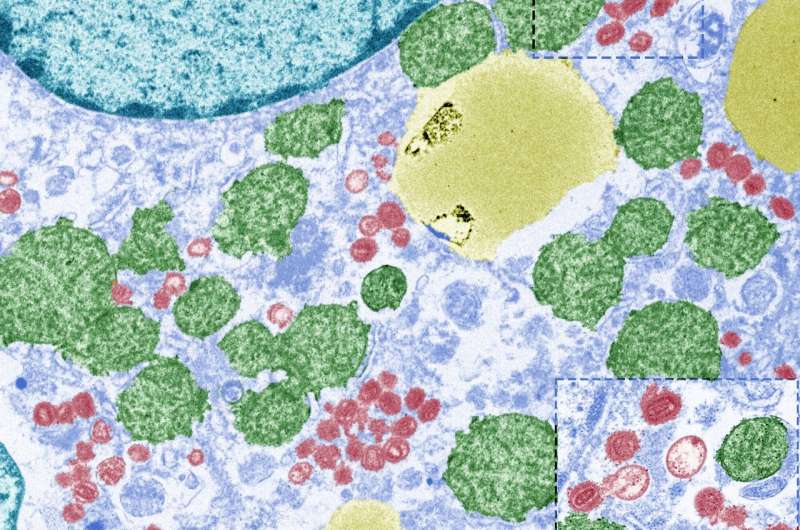Messenger RNA technology shows promise for developing infectious disease therapeutics

Army scientists and industry partners were among the first to demonstrate that messenger RNA (mRNA)—the technology recently used in COVID-19 vaccines and others—could also be used to develop treatments for infectious diseases. Their work appears in the June 2022 issue of the journal Molecular Therapy Nucleic Acids.
Investigators at the U.S. Army Medical Research Institute of Infectious Diseases (USAMRIID) collaborated on the study with scientists from CureVac, a biopharmaceutical company focused on developing a new class of drugs based on mRNA. Their central principle is to use mRNA as a data carrier for information that the body can use to produce its own therapeutic, effectively warding off disease.
The team set out to examine the capabilities of nucleic acid technology apart from vaccine development. To demonstrate proof of concept, they used several mRNAs carrying the "blueprint" for three separate monoclonal antibodies (mAbs)—proteins that help to produce an immune response. According to the lead author Eric Mucker, Ph.D., when the mRNAs were administered to the same rabbit, all three mAbs were shown to be circulating in the blood within just one day.
"We are pleased that with this project we were able to show, for the first time, significant systemic levels of functional antibody transcribed from an mRNA upon intramuscular injection," said Patrick Baumhof, Senior Vice President for Technology at CureVac. "The possibility of simultaneous expression of three distinct antibodies within the same animal shows the potential of mRNA antibody technology."
The work was supported by the Defense Advanced Research Projects Agency's ADEPT: PROTECT program, which is aimed at early detection and rapid response to disease outbreaks.
"This study and similar projects conducted under the ADEPT: PROTECT program were truly innovative," said Mucker, adding that they effectively laid the groundwork for mRNA vaccines years before the COVID-19 pandemic.
Notably, the three mAbs tested in the study also had previously demonstrated some potential activity against poxviruses—making the publication of this work especially timely in light of the simultaneous monkeypox outbreaks occurring around the world.
"USAMRIID has an extensive track record for developing models, tools, and countermeasures to combat smallpox and monkeypox diseases," commented USAMRIID senior author Jay Hooper, Ph.D. "While this study is primarily technology based, it specifically contributes to future-generation countermeasures to prevent and treat diseases caused by pathogenic poxviruses."
More information: Eric M. Mucker et al, Lipid nanoparticle delivery of unmodified mRNAs encoding multiple monoclonal antibodies targeting poxviruses in rabbits, Molecular Therapy—Nucleic Acids (2022). DOI: 10.1016/j.omtn.2022.05.025





















